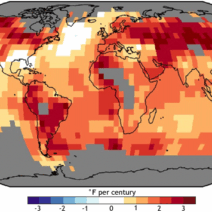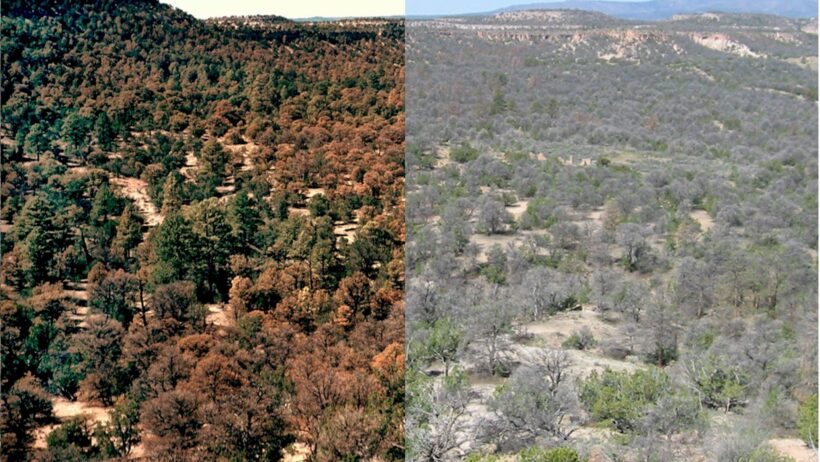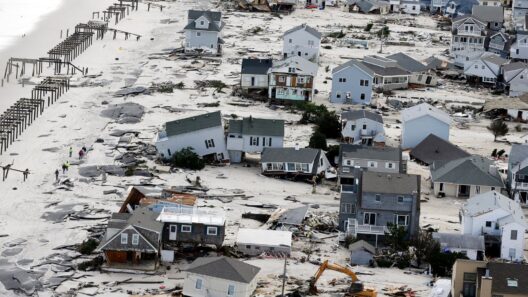Global warming is often perceived merely through the lens of rising temperatures, but the reality is multifaceted and complex. As we delve into the paradoxes of climate change, one particularly striking phenomenon is the counterintuitive impacts it has on winter weather patterns. Understanding this intricate relationship is crucial for grasping the broader implications of global warming.
Firstly, let’s explore the fundamental concepts of climate change and its omnipresent influence on atmospheric conditions. Climate change refers to long-term alterations in temperature, precipitation, and other atmospheric parameters, primarily driven by anthropogenic factors such as greenhouse gas emissions. The exacerbation of the greenhouse effect leads to an overarching increase in average temperatures. However, this warming trend interacts with various climatic systems, giving rise to a spectrum of behaviors, particularly during winter months.
One notable consequence of global warming is the increasing volatility of weather patterns. As average temperatures rise, the Arctic regions warm at an accelerated pace compared to the mid-latitudes. This differential warming can disrupt the polar vortex, a large mass of cold air that typically circles around the Arctic. When the polar vortex weakens, it can lead to frigid arctic air spilling southwards into temperate regions, resulting in anomalously cold winter events. This phenomenon is contrary to the expectation that global warming should yield uniformly milder winters.
Colder-than-usual winters can also be observed through an uptick in extreme weather events, such as severe snowstorms and prolonged cold spells. As warmer air holds more moisture, the conditions become ripe for intense precipitation, which can manifest as heavy snowfall during the winter months. This scenario challenges the simplistic assumption that climate change equates to milder winters; instead, we must recognize that warming can inflect additional variability into precipitation patterns.
Moreover, the impact of climate change on winter ecosystems cannot be overstated. Species that have adapted to specific temperature and precipitation regimes may find themselves out of sync with their environment. For instance, animals that rely on hibernation cycles may struggle to find appropriate food sources if warmer temperatures disrupt the emergence of winter flora. Similarly, altered ice conditions in lakes and rivers can profoundly affect aquatic ecosystems. Fish populations, for example, depend on stable winter ice cover to regulate the temperatures of their habitats, and disturbances in these patterns can jeopardize their reproductive and survival rates.
Shifts in animal migrations further illustrate the ecological ramifications of warming winters. Many bird species migrate based on climatic cues, and the unpredictability introduced by climate change can lead to mismatches in timing. Consequently, birds may arrive at their breeding grounds too early or too late, adversely affecting their nesting success. Additionally, invasive species may take advantage of altered conditions, further stressing native species that are unable to adapt swiftly to the changes.
In the realm of human society, the impacts of winter weather patterns influenced by climate change carry significant social and economic consequences. Infrastructure designed to withstand historical climatic norms may falter under unexpected winter extremes. Cities that are accustomed to benign winters may find themselves ill-prepared for severe snowfall or record-breaking cold snaps, leading to transportation disruptions and heightened emergency response costs.
Furthermore, energy consumption patterns are also susceptible to alterations driven by unusual winter conditions. For example, a sudden plunge in temperatures can lead to spikes in energy demand as heating systems struggle to keep pace with the sudden chill. This, in turn, can exacerbate greenhouse gas emissions through increased reliance on fossil fuel sources, illustrating a concerning feedback loop between climate change and energy consumption.
The synergy between warmer global temperatures and startling winter variability underscores the need for a paradigm shift in our understanding of climate change. While it is tempting to view warming simply as a harbinger of milder winters, the evidence compels us to reckon with a more nuanced reality that encompasses both warming and unanticipated cold events.
Addressing these complex realities requires an interdisciplinary approach. Public awareness campaigns must transcend simplistic narratives and embrace the scientific intricacies behind climate change. Communities can benefit from engaging in local climate adaptation strategies that consider extreme winter weather. For example, developing resilient infrastructure capable of withstanding variable conditions is paramount for safeguarding societal functions.
Moreover, investment in research to better understand the intricacies of climate modeling will be vital for predicting and preparing for the erratic behaviors of winter weather stemming from global warming. Scientists must continue to investigate the interplay between atmospheric phenomena, ocean currents, and ice melt patterns to provide actionable insights guiding policy decisions.
Additionally, fostering collaboration among governments, organizations, and communities can catalyze effective responses to the challenges posed by climate change. Policymakers must prioritize climate resilience and adaptive management to combat the unforeseen consequences of fluctuating winters. This effort can include everything from improving weather forecasting systems to implementing sustainable agricultural practices that anticipate climate variability.
In summation, understanding the multifarious winter impacts of global warming requires a willingness to confront uncomfortable truths. As we untangle the web of interactions between a warming planet and winter weather extremes, we must remain vigilant in our efforts to mitigate climate change and adapt to its pervasive consequences across ecosystems, economies, and communities. Only through comprehensive comprehension and collaboration can we forge a path towards a more resilient and sustainable future.







